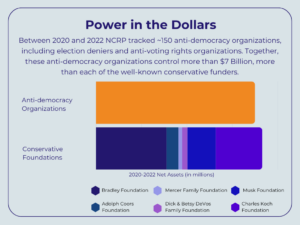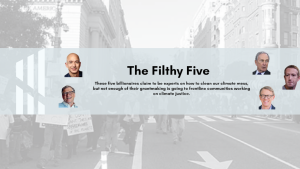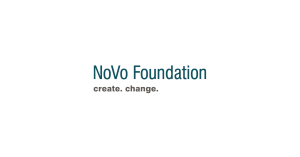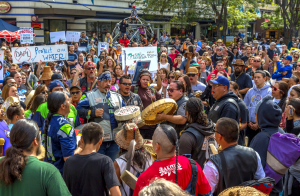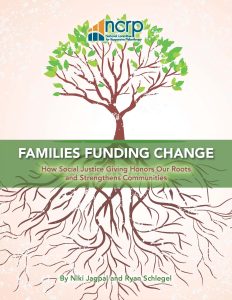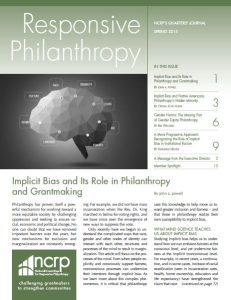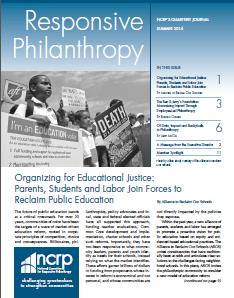Editor’s Note: Last month, the Movement for Black Lives National Convening in Cleveland brought together over 1,000 grassroots leaders fighting to end racial injustice in our nation. We called for foundation support of this convening, and support for the movement remains critical. To this end, we’re reposting NCRP Executive Director Aaron Dorfman’s five steps that white foundation leaders can take to promote racial justice.
This piece first appeared in The Chronicle of Philanthropy on March 13, 2015.
Since last summer, a movement has been brewing in response to the police killings of Michael Brown, Tamir Rice, Eric Garner, and many others. People across the country have taken to the streets, demanding changes in policies that contribute to government-sanctioned violence against African-Americans and Latinos.
People of color are leading this movement, as they should be, but they shouldn’t be expected to move this agenda forward by themselves. White people working in philanthropy are an important source of funding for nonprofits helping to organize on-the-ground efforts across the country, but it is essential that they take an active role, too. The future of our nation depends on our building a society that ensures everyone has an opportunity to thrive, regardless of race. Philanthropy has an important role to play in the coming months and years to help the movement bring about lasting progress.
Here are five simple steps that white leaders can take to promote racial justice:
Become educated about the issues. The burden of teaching you more about the realities of racial inequity does not lie with friends and colleagues who are not white. A plethora of research and information exists to help deepen understanding of the issues of race, including resources from Race Forward and the Philanthropic Initiative for Racial Equity.
If you’re not voraciously and regularly reading pieces written by people who aren’t white, you’re missing out. African-American columnists like Charles Blow of The New York Times and commentators like Ta-Nehisi Coates of The Atlantic are two of my favorites.
Another way to educate yourself is to attend conference sessions and webinars designed by and focused on people of color. Too often, the annual dinner and lecture sponsored by the Association of Black Foundation Executives has perhaps only one or two white people in the room. The lecture is always fantastic, and it’s outrageous that so few white people attend. Incidentally, conference sessions about women or LGBTQ issues similarly have few, if any, straight white men in the room. This has to change. Go, listen, and learn.
Link racial justice to your foundation’s mission. No matter what issues your foundation is working to address, it’s likely that there is a connection to racial justice. It’s essential that you understand that connection and make it explicit. Engage board members in that discussion. Don’t put the burden of initiating this conversation on the people of color on your staff or board.
Hire and promote Blacks, Hispanics, and other people of color for staff and trustee positions.
The latest data suggest that 16.5 percent of foundation trustees, 7.1 percent of foundation CEOs, and 15.4 percent of other full-time executive staff members at foundations are people of color. There are signs of improvement in these numbers, but the pace of change is glacial, and the record in philanthropy lags behind national trends.
According to the Bureau of Labor Statistics, nonwhites made up 34 percent of the total U.S. labor force in 2012.
There are no good excuses for not actively seeking out talented people of color for top leadership roles. It’s been proven that greater diversity in groups leads to better decisions, especially in response to the kind of complex problems that foundations wrestle with every day. The D5 Coalition has research, a self-assessment tool, and other resources that can be helpful for any foundation that wants to diversify.
Building a diverse team of staff and trustees isn’t sufficient, however.
Foundations must also create inclusive environments to maintain diversity.
The Exit Interview by Association of Black Foundation Executives, shows how black professionals in philanthropy often feel isolated and excluded from growth opportunities. The Denver Foundation’s Inclusiveness Project offers a step-by-step guide for building an organization that is diverse and tolerant of differences.
Take a stand. One of the most important things you can do is put your personal reputation and your institution’s reputational capital on the line while standing strong for policies that promote racial justice.
The hard truth is that powerful white people often listen to other powerful white people. When you stand with grass-roots leaders of color without trying to speak for them or stealing their voice, you help them get heard.
It may not always be easy to speak truth to power in primarily white communities. It might be easier to do nothing. But the white clergy who marched at Selma offer a powerful example of why complacency should not be an option. You probably won’t have to do anything nearly as difficult, so what are you afraid of?
Provide unrestricted long-term support to grassroots organizing groups. Offering flexible aid to organizing groups pushing for racial justice is perhaps the most important thing grant makers can do.
Foundation leaders believe they are more than just the purse that holds the money. But how you give money away and to whom you give it matters immensely. Foundations often want to control the agenda, but movement building starts by letting go and allowing communities and the nonprofits that serve them to determine what’s best.
Role models abound. The Hill-Snowdon Foundation provided critical funding that resulted in minimum-wage increases in two Maryland counties and the District of Columbia. The Woods Fund Chicago and the Ben & Jerry’s Foundation provided funding that resulted in expanded rights for immigrants in Illinois and Vermont. NoVo Foundation grantees helped secure an extension of the Violence Against Women Act. The California Endowment played a role in the passage and adoption of the Affordable Care Act, thereby expanding access to health care for millions.
Those are just a few examples of what is possible when foundations invest for the long term in grass-roots organizing.
This fight for racial justice is not a flash-in-the-pan moment. It’s a movement. Serious systemic change is a possibility. If you’re a white person working in philanthropy and you say you’re in favor of racial equity but then do nothing, you’re a hypocrite. It’s time to decide: What role will you play?









